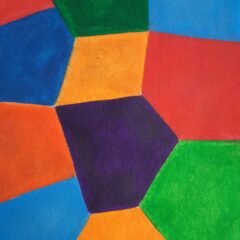Interested in the theory of point processes? There is the freely available online book manuscript:
- Baccelli, Błaszczyszyn, and Karray – Random Measures, Point Processes, and Stochastic Geometry.
The authors are established names in the field having written many papers on using point processes to model wireless networks.
(Disclaimer: I have worked and published with them. I have even co-authored a book with one of them.)
Of course there are already books on point process, including the two-volume classic by the Daryl Daley and David Vere-Jones. Although that work still serves as a good reference, since its publication researchers have produced many new results. This explains the publication of two more recent books on point processes and their generalization random measures:
- Last and Penrose – Lectures on the Poisson process, Cambridge University Press.
- Kallenberg – Random Measures, Theory and Applications, Springer.
There’s a free online version of the book by Last and Penrose.
(Disclaimer: Günter Last graciously mentioned my name in the acknowledgements for my very minor contribution to the historical section.)
The manuscript by Baccelli, Błaszczyszyn, and Karray covers newer topics and results by using mathematically rigorous proofs. For example, there are interesting results on determinantal point processes, also called fermion point processes, which started off as a model for subatomic particles in seminal work by Odile Macchi, but they have found applications in wireless network models and machine learning. (I mentioned these later applications in this and this post.)
Despite applications being a strong motivation, the book is not for the faint of hearted in terms of mathematics. In the tradition of French probability, there is plenty of rigour, which means mathematical abstraction, analysis and measure theory.
Update: Mohamed Karray uploaded some lecture slides based on these lectures. Karray is a researcher at Orange Labs in Paris who has research interests in telecommunications (naturally), as well as machine (or statistical) learning.
Further reading
Classic books
Anyone who wants to learn anything about the Poisson point process must consult this gem of mathematical writing:
- Kingman – Poisson Processes, Oxford Press.
The next volumes were the standard reference on point processes:
- Daley and Vere-Jones – An Introduction to the Theory of Point Processes: Volume I: Elementary theory and Methods, Springer.
- Daley and Vere-Jones – An Introduction to the Theory of Point Processes: Volume II: General theory and Structure, Springer.
Unfortunately, some of the methods are dated and, I am told, there some flaws in some of the mathematical proofs. Still, it has packed full of results and references, serving as a good starting point.
Recent books
As I mentioned above, these two recent books cover the modern theory of point processes:
- Last and Penrose – Lectures on the Poisson process, Cambridge University Press.
- Kallenberg – Random Measures, Theory and Applications, Springer.
Determinantal point processes
The applications of determinantal point processes stem from their tractable mathematical properties, some of which were proved by researchers Takahashi and Shirai in the two papers:
- 2003 – Takahasi and Shirai – Random point fields associated with certain Fredholm determinants I: fermion, Poisson and boson point processes, Journal of Functional Analysis.
- 2003 – Takahasi and Shirai – Random point fields associated with certain Fredholm determinants II: fermion shifts and their ergodic and Gibbs properties, Annals of Applied Analysis.
Another important paper on these point processes is
- 2006 – Hough, Krishnapur, Peres, Virág – Determinantal processes and independence.

